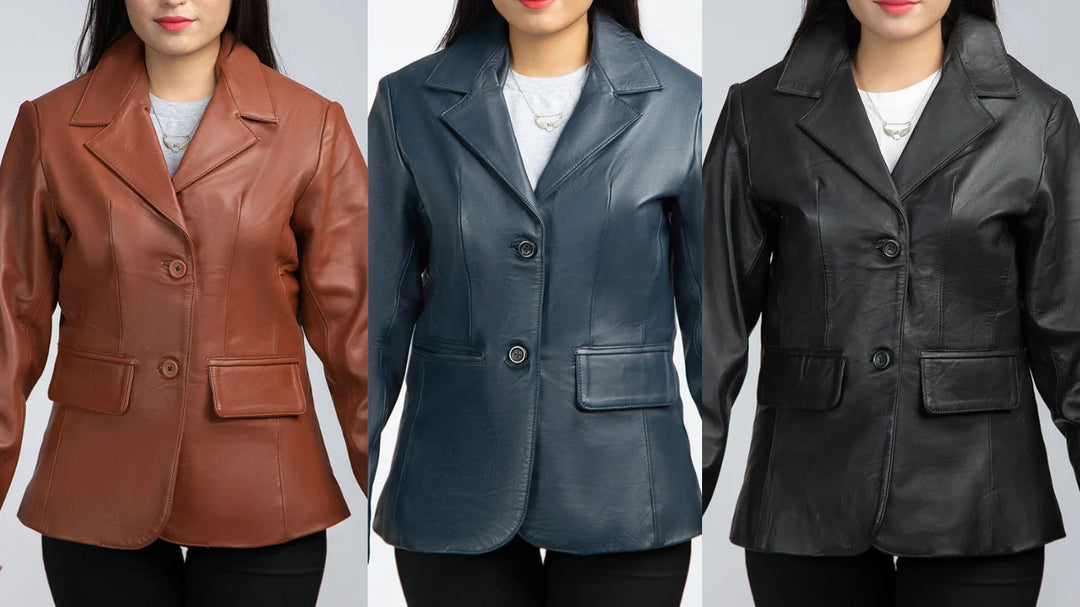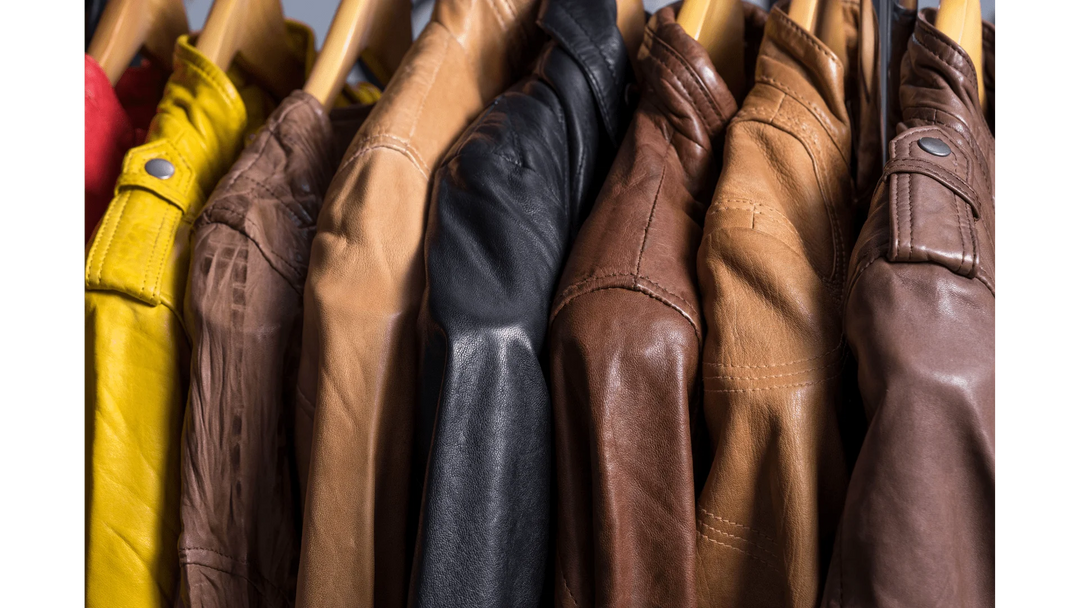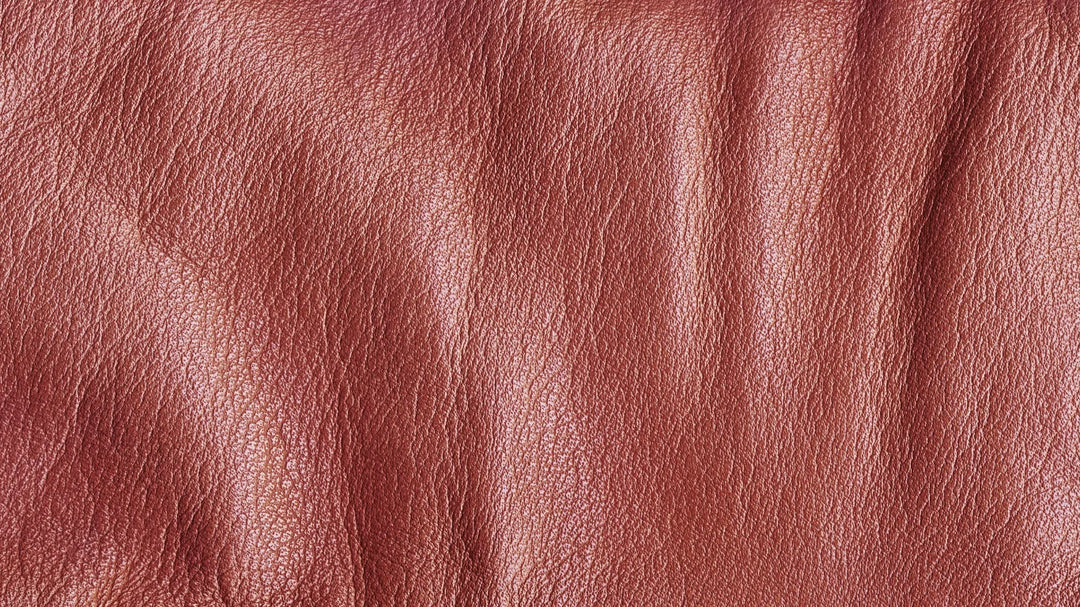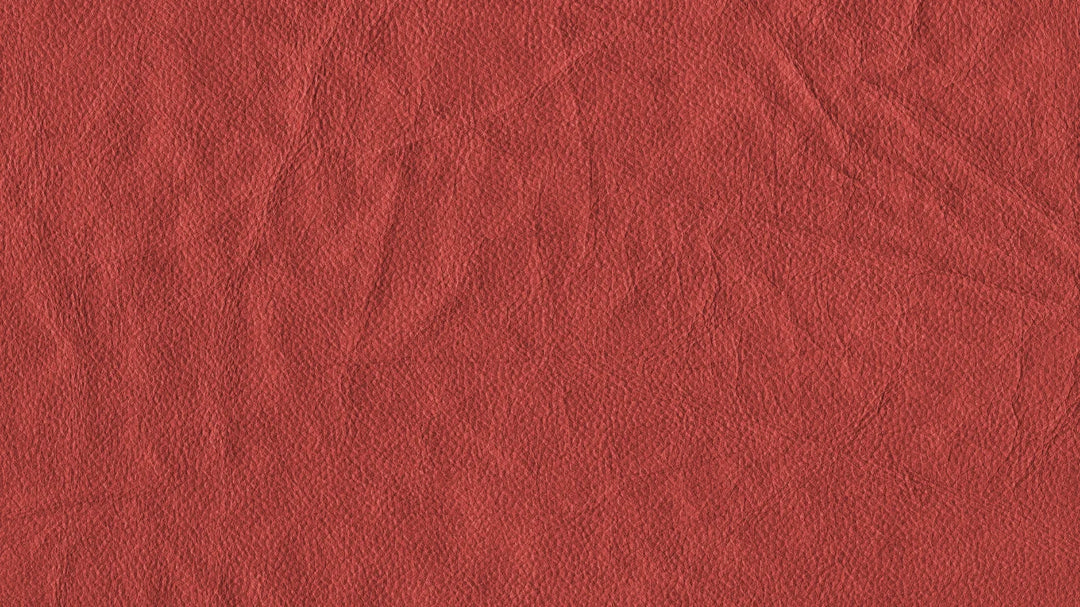Are you curious about what exactly bonded leather is? You've come to the right place!
In this article, we'll delve into the characteristics, manufacturing process, and uses of bonded leather in different industries. Whether you're a consumer looking to purchase bonded leather products or simply interested in learning more about this type of leather, we've got you covered.
So, what makes bonded leather unique? Well, it's a type of leather that is made by bonding together shredded leather scraps with a polyurethane or latex binder. This process creates a durable and versatile material that closely resembles genuine leather, but at a more affordable price point.
From furniture upholstery to fashion accessories, bonded leather is widely used in various industries. However, it's important to understand the pros and cons of bonded leather before making a purchase.
So, let's dive in and explore the world of bonded leather together!
Characteristics of Bonded Leather
So, you're probably wondering what makes bonded leather so unique, huh? Well, let me tell you all about it.
Bonded leather, also known as reconstituted leather or blended leather, is a material that's made by shredding leather scraps and then bonding them together with a polyurethane or latex adhesive. This process creates a durable and versatile material that closely mimics the look and feel of genuine leather.
One of the main characteristics of bonded leather is its affordability. Since it's made from leftover leather scraps, it's a much more cost-effective option compared to genuine leather. This makes it a popular choice for consumers who want the luxurious look of leather without the hefty price tag.
Additionally, bonded leather is available in a wide range of colors and finishes, allowing you to easily find a style that suits your taste and decor.
Another key feature of bonded leather is its durability. The bonding process creates a strong and resilient material that's resistant to cracking, peeling, and tearing. This makes it ideal for use in furniture upholstery, where it can withstand regular use and provide long-lasting comfort. However, it's important to note that bonded leather isn't as durable as genuine leather, and over time, it may show signs of wear and tear.
Lastly, bonded leather is relatively easy to maintain. It can be cleaned using a mild soap and water solution, making it a low-maintenance option for those who want the look of leather without the hassle of regular upkeep. However, it's important to avoid using harsh chemicals or abrasive cleaners, as they can damage the material. By following proper care instructions, you can ensure that your bonded leather items stay looking their best for years to come.
Bonded leather is a unique material that offers the look and feel of genuine leather at a more affordable price. Its affordability, durability, and easy maintenance make it a popular choice for furniture upholstery and other applications. So, if you're in the market for a stylish and budget-friendly option, bonded leather might just be the perfect choice for you.
Manufacturing Process of Bonded Leather
To create bonded leather, you start by combining shredded leather scraps with a polyurethane binder. This process involves taking leftover leather pieces and grinding them into small particles. These particles are then mixed with a polyurethane binder, which acts as a glue to hold the leather particles together.
The mixture is spread out in a thin layer and pressed together under high pressure and heat. This forms a sheet of bonded leather that can be used for various applications.
Once the bonded leather sheet is formed, it undergoes a finishing process to give it a more leather-like appearance. This involves applying a layer of polyurethane coating on top of the bonded leather to give it a smooth and glossy finish. The coating also helps to protect the bonded leather from wear and tear, making it more durable.
The manufacturing process of bonded leather allows for the utilization of leather scraps that would otherwise go to waste. By combining these scraps with a polyurethane binder, a new material is created that mimics the look and feel of genuine leather. This process is not only environmentally friendly but also cost-effective, as it reduces the need for new leather production.
It's important to note that bonded leather is not as durable or long-lasting as genuine leather. Over time, the polyurethane coating may wear off, revealing the underlying leather particles. However, with proper care and maintenance, bonded leather can still provide a decent lifespan and serve its purpose well.
Uses of Bonded Leather in Different Industries
The versatile material finds its place in various industries, offering a cost-effective alternative that replicates the luxurious look and feel of genuine leather.
One industry that extensively uses bonded leather is the furniture industry. Bonded leather is commonly used to make sofas, chairs, and other upholstered furniture pieces. It provides a similar aesthetic appeal to genuine leather but at a fraction of the cost. Bonded leather furniture is also known to be durable and easy to clean, making it a practical choice for both residential and commercial settings.
Another industry that benefits from the use of bonded leather is the automotive industry. Bonded leather is often used in the production of car interiors, including seats, armrests, and steering wheel covers. It offers a high-end appearance and a comfortable feel, enhancing the overall interior design of vehicles. Additionally, bonded leather is resistant to wear and tear, making it a suitable choice for car interiors that are exposed to constant use and potential spills.
The fashion industry is also no stranger to the use of bonded leather. Many fashion brands incorporate bonded leather into their collections to create stylish accessories such as handbags, wallets, and belts. Bonded leather provides a sleek and polished look, making it an attractive option for fashion-forward consumers. Furthermore, the affordability of bonded leather allows fashion brands to offer their customers trendy and high-quality products at more accessible price points.
Lastly, the hospitality industry makes use of bonded leather in various ways. Hotels, restaurants, and other hospitality establishments often utilize bonded leather for upholstery purposes. Bonded leather furniture in hotel lobbies and dining areas adds a touch of sophistication and elegance to the overall ambiance. The durability and easy maintenance of bonded leather make it a practical choice for high-traffic areas, ensuring that the furniture remains in good condition for an extended period.
Bonded leather finds its applications in several industries. From furniture to automotive, fashion, and hospitality, bonded leather offers a cost-effective alternative to genuine leather while still providing a luxurious look and feel. Its versatility and durability make it a popular choice for manufacturers and consumers alike, ensuring that bonded leather continues to be a preferred material across different sectors.
Pros and Cons of Bonded Leather
Imagine having a material that provides the luxurious look and feel of genuine leather, but at a fraction of the cost, and yet, it has its drawbacks as well. That's where bonded leather comes in.
Bonded leather is a type of upholstery material that's made by shredding leather scraps and then bonding them together with a polyurethane or latex adhesive. This process creates a durable and versatile material that can be used in a variety of applications.
One of the main advantages of bonded leather is its affordability. It's made from leather scraps, so it's much cheaper to produce compared to genuine leather. This makes it a popular choice for consumers who want the look and feel of leather without the hefty price tag.
Additionally, bonded leather is also more resistant to cracking and peeling compared to genuine leather, making it a durable option for furniture and other products.
However, bonded leather does have its downsides. One major drawback is that it's not as durable or long-lasting as genuine leather. Over time, the polyurethane or latex adhesive used to bond the leather scraps together can deteriorate, causing the material to peel or crack. This means that bonded leather may not be the best choice for high-traffic areas or items that will be subjected to regular wear and tear.
Another disadvantage of bonded leather is that it lacks the natural breathability of genuine leather. Genuine leather is known for its ability to regulate temperature and provide a comfortable seating experience. Bonded leather, on the other hand, can feel hot and sticky, especially in warmer climates. This lack of breathability can make it less comfortable to sit on for extended periods of time.
While bonded leather offers the luxurious look and feel of genuine leather at a fraction of the cost, it does have its drawbacks. It's more affordable and resistant to cracking compared to genuine leather, but it's not as durable or breathable. When considering bonded leather for furniture or other products, it's important to weigh the pros and cons to determine if it's the right choice for your needs.
Distinguishing Bonded Leather from Other Leather Types
Picture yourself trying to differentiate between various types of leather, like bonded leather, and other leather options. It can be quite a challenge, especially if you're not familiar with the characteristics of each type. However, there are a few key ways to distinguish bonded leather from other leather types.
Firstly, take a look at the texture of the leather. Bonded leather tends to have a smoother and more uniform texture compared to genuine leather. This is because bonded leather is made by combining shredded leather scraps with adhesive and then applying a layer of polyurethane or vinyl on top. Genuine leather, on the other hand, has a more natural and varied texture due to the grain and pores of the animal hide.
Another way to differentiate bonded leather is by its smell. Genuine leather has a distinct and pleasing smell that is often associated with luxury and quality. Bonded leather, on the other hand, may have a synthetic or chemical smell due to the adhesive and synthetic materials used in its production. So, if you come across a leather product with an unpleasant or artificial smell, it's likely bonded leather.
One more thing to consider is the price. Bonded leather is generally cheaper than genuine leather because of its manufacturing process and the use of lower-quality materials. So, if you find a leather item that seems too good to be true in terms of price, it's worth examining it closely to determine if it's indeed bonded leather rather than genuine leather.
Lastly, you can also look for any signs of peeling or flaking on the surface of the leather. Bonded leather is prone to peeling and deteriorating over time, especially if it's exposed to excessive heat or moisture. Genuine leather, on the other hand, ages more gracefully and develops a beautiful patina over time.
Differentiating between bonded leather and other leather types can be done by examining the texture, smell, price, and signs of wear. By paying attention to these factors, you can make a more informed decision when purchasing leather products and ensure that you're getting the quality and durability you desire.
Tips for Caring for Bonded Leather Products
Take care of your beloved items made from this material to ensure their longevity and keep them looking and feeling their best. Bonded leather products may require some special attention to maintain their quality. Here are a few tips to help you care for your bonded leather items.
Firstly, it's important to keep your bonded leather products away from direct sunlight and heat sources. Excessive exposure to these elements can cause the material to fade, crack, or become brittle. To protect your items, consider using curtains or blinds to block out sunlight, and avoid placing them near radiators or heating vents.
Secondly, regular cleaning is essential to keep bonded leather looking fresh and new. Start by gently wiping down the surface with a soft, damp cloth to remove any dust or dirt. Avoid using harsh chemicals or abrasive cleaners, as these can damage the material. Instead, opt for a mild soap or leather cleaner specifically designed for bonded leather.
Thirdly, be cautious when using any liquid on bonded leather products. In case of spills, quickly blot the area with a clean cloth to absorb the liquid. Avoid rubbing or scrubbing, as this can spread the stain and potentially damage the material. If a stain persists, consult a professional cleaner who specializes in leather care to avoid further damage.
Lastly, it's important to keep your bonded leather items moisturized to prevent them from drying out and cracking. Use a leather conditioner or moisturizer specifically made for bonded leather, and apply it to the surface using a soft cloth. This will help to keep the material supple and prevent it from becoming stiff or brittle.
By following these simple tips, you can ensure that your bonded leather products remain in excellent condition for years to come. Remember to keep them away from direct sunlight and heat sources, clean them regularly with mild soap or leather cleaner, be cautious with liquids and stains, and moisturize them to maintain their softness and durability. With proper care, your bonded leather items will continue to look and feel their best.
Frequently Asked Questions
Is bonded leather more durable than genuine leather?
Yes, bonded leather is typically more durable than genuine leather. It is made by bonding scraps of leather together, creating a stronger material. However, it may not have the same luxurious feel as genuine leather.
Can bonded leather be repaired if it gets damaged?
Yes, bonded leather can be repaired if it gets damaged. You can use leather repair kits or seek professional help to fix tears, scratches, or other issues.
Is bonded leather environmentally friendly?
Bonded leather is not environmentally friendly. It is made by bonding leftover leather scraps together with chemicals. This process contributes to pollution and waste, making it an unsustainable choice for the environment.
How does the cost of bonded leather compare to other leather types?
The cost of bonded leather is generally lower compared to other leather types. It is a more affordable option because it is made from leftover leather scraps that are bonded together with polyurethane.
Are there any health risks associated with using products made from bonded leather?
There are no known health risks associated with using products made from bonded leather. It is a safe material that is commonly used in furniture and other consumer goods.
































